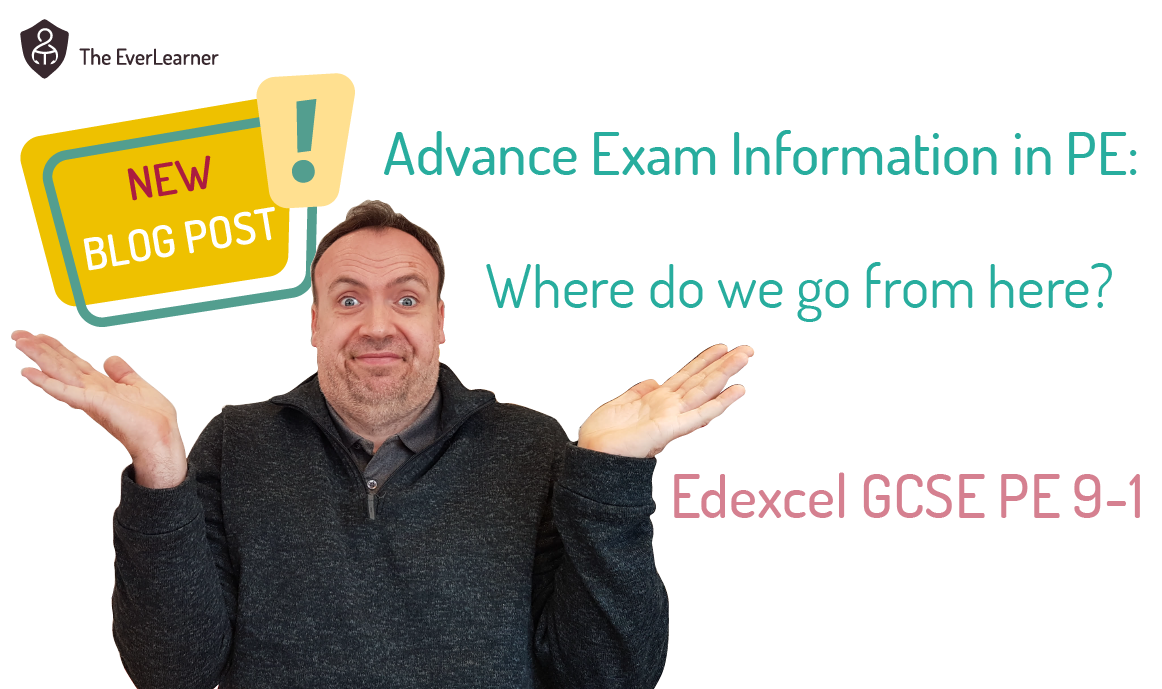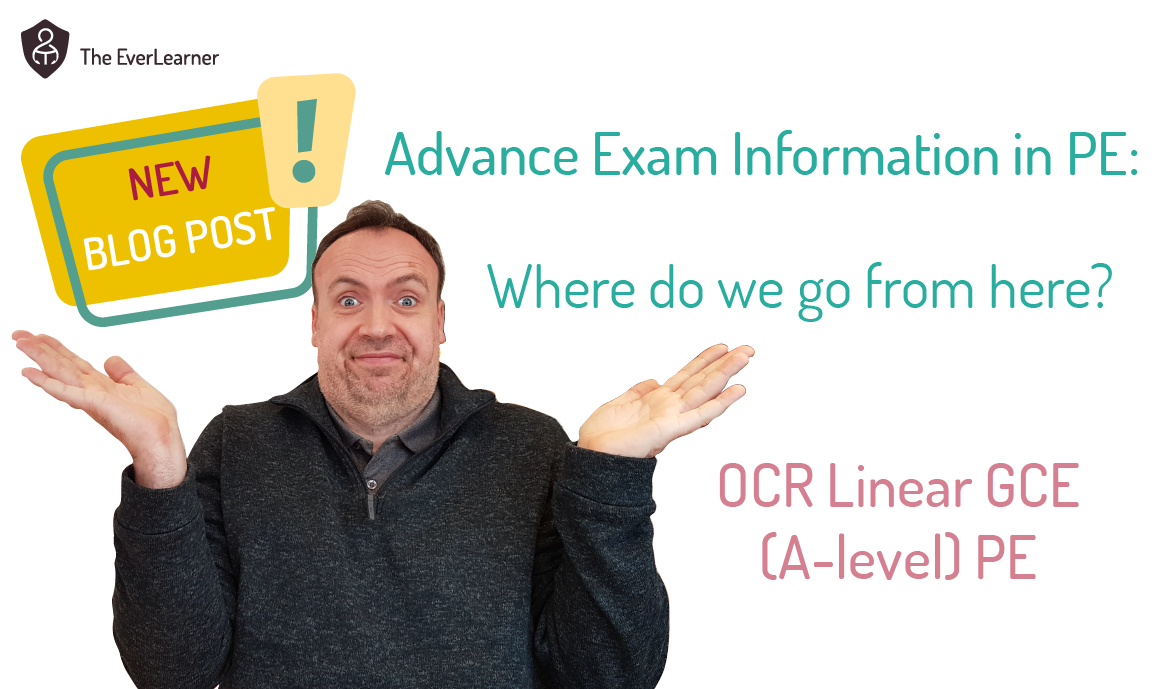Advance Exam Information in OCR GCSE PE 9-1: Where Do We Go from Here?
In a rush? Jump to the specific question/section.
➚ Q: What guidance has been published for PE?
➚ Q: How did the sector react to the advance exam information?
➚ Q: What are the implications for my classroom teaching?
➚ Q: What is the specific guidance from OCR for GCSE PE?
➚ Q: What are James's recommendations for OCR GCSE PE?
➚ What can The EverLearner do to help?
Q: What guidance has been published for PE?
On Monday 7th February 2022, all exam boards published their advance exam information for PE and Sport courses examined in summer 2022. The aim of this guidance can be viewed here:

Extract taken from JCQ’s publication: Advance Information for Ofqual Regulated General Qualifications (Summer 2022)
JCQ have guided the exam boards to provide information that does not jeopardise these principles:
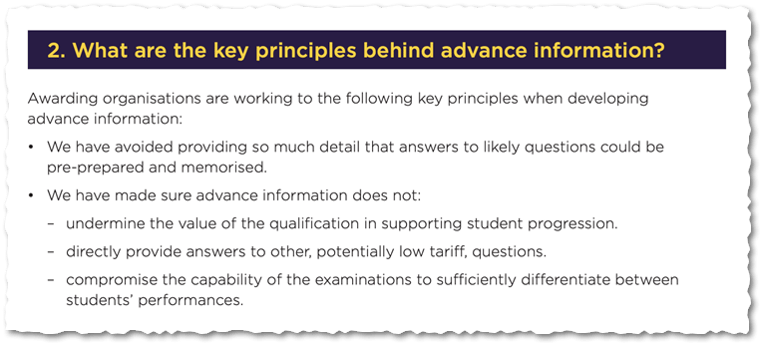
So, with these principles in mind, teachers and students received the advance exam information and what follows is aimed at achieving three things:
1. Establishing core educational principles by which teachers should use the advance information.
2. Interpreting each batch of advance exam information.
3. Making recommendations on each batch of advance exam information (covering all major courses).
Q: How did the sector react to the advance exam information?
Judging by the online response, PE teachers received the guidance with a degree of frustration. One main bone of contention was the issue of synopticity:
Example 1:

Taken from AQA GCSE PE 9-1 advance exam information publication.
Example 2:
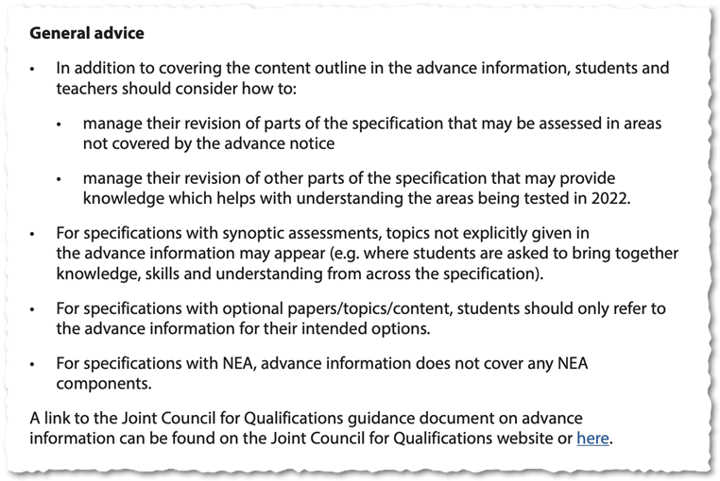 Taken from Edexcel GCSE PE 9-1 advance exam information.
Taken from Edexcel GCSE PE 9-1 advance exam information.
Teachers feel that the AEI may, therefore, be absent of some of the topics that feature in the most challenging questions because they are synoptic in nature. My interpretation of this is slightly different. For example, the AQA GCSE PE 9-1 does feature a nine-mark synoptic question at the very end of the paper. The nature of this question is that students receive credit for being able to link wider aspects of learning to the question theme synoptically. I believe it is this skill that the guidance is referring to. Therefore, I believe that all high-tariff topics have been listed on the AEI with the exception of the optional links that students make. These links are very open in their nature and completely individual to the student. Whilst this is only an interpretation, I believe it is the one that makes sense.
Q: So, what are the implications for my classroom teaching?
It is vital that core educational principles must be applied by teachers when using the AEI:
1. Students have the right to learn all knowledge and skills relating to a course.
2. The AEI provides relevant context by which specific content and skills can be honed.
3. Students need to be guided to prepare all specification knowledge and skills.
Q: What is the specific guidance from OCR for GCSE PE?
First of all, it is vital that you view the full guidance from OCR here.
This is our summary of the listed content: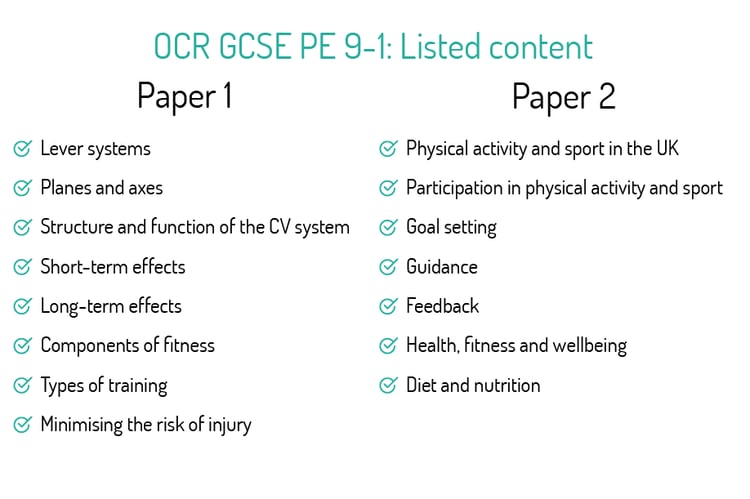
Q: What are James's recommendations for OCR GCSE PE?
My top five recommendations for OCR GCSE PE 9-1:
🔑 Recommendation 1: OCR has a strong history of asking questions on the effects of exercise. Typically, OCR will ask students to write about one subgroup of effects. For example, the student might be asked a question about the long-term cardiovascular effects. In this context, only cardiovascular knowledge will be accepted and long-term effects on the respiratory system, say, will receive no credit. Therefore, ensure students can differentiate between cardiovascular, respiratory and musculoskeletal effects of exercise.
🔑 Recommendation 2: Use the guidance topic to develop evaluative (AO3) skills with learners. Knowledge of guidance requires that students are evaluative.
I have provided the key information below: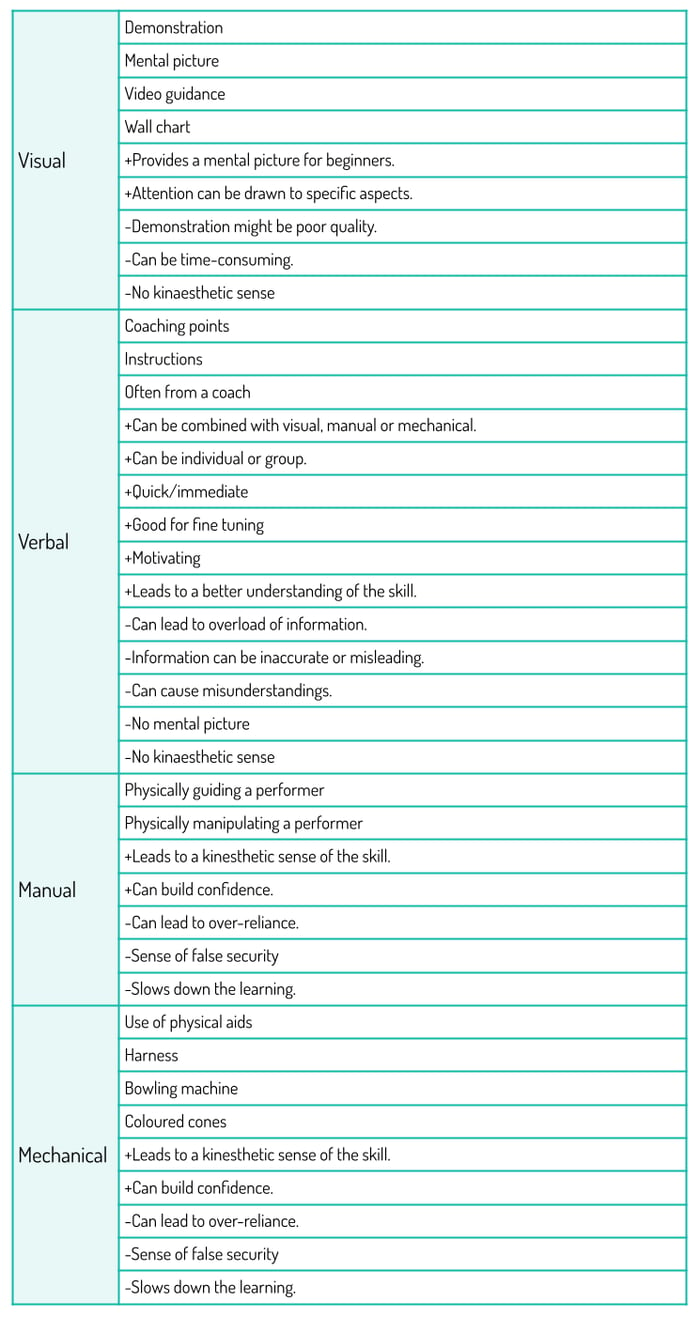
🔑 Recommendation 3: Don’t underestimate the importance of the minimising the risk of injury topic. This is a substantial area of the course and will definitely require application skills (AO2) by the student.
The base requirement is shown in this image:

However, students must be able to apply these concepts to a sports hall, a fitness centre, a playing field, an artificial outdoor area and a swimming pool. Below are examples of the level of the required application and we ask that teachers notice that the artificial area section has never previously been examined: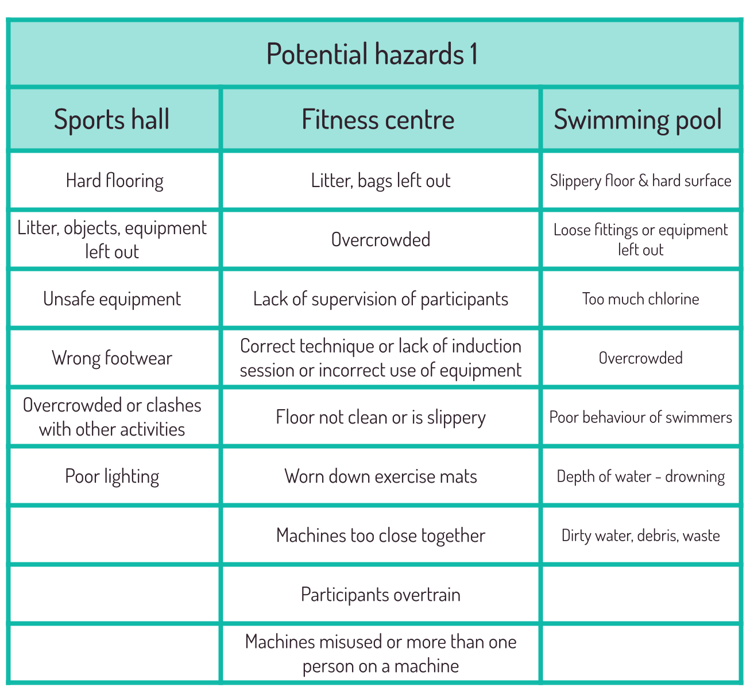
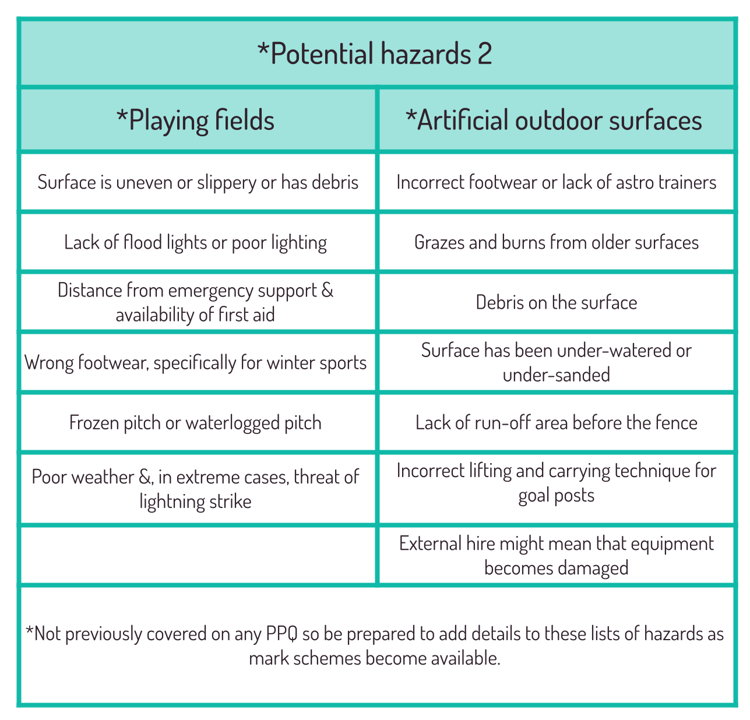
🔑 Recommendation 4: Remember that Components of fitness (listed) are directly linked to Understanding of fitness testing (not listed). I recommend that a good knowledge of fitness testing is learned in association with the components of fitness.
Here is an example: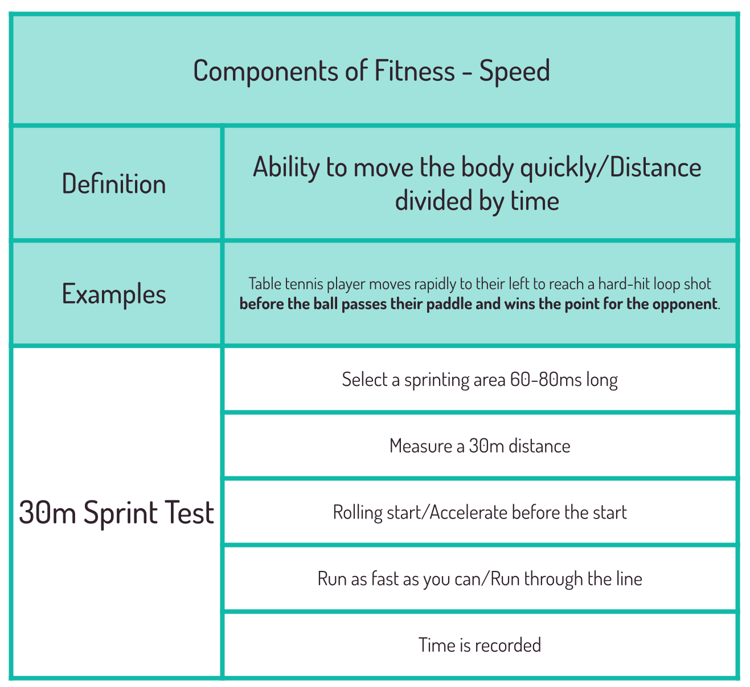
🔑 Recommendation 5: Make students aware that, on paper 2, the first two listed topics (Physical activity and sport in the UK and Participation in physical activity and sport) are likely to incorporate data analysis skills.
Here are two examples from June 2018:

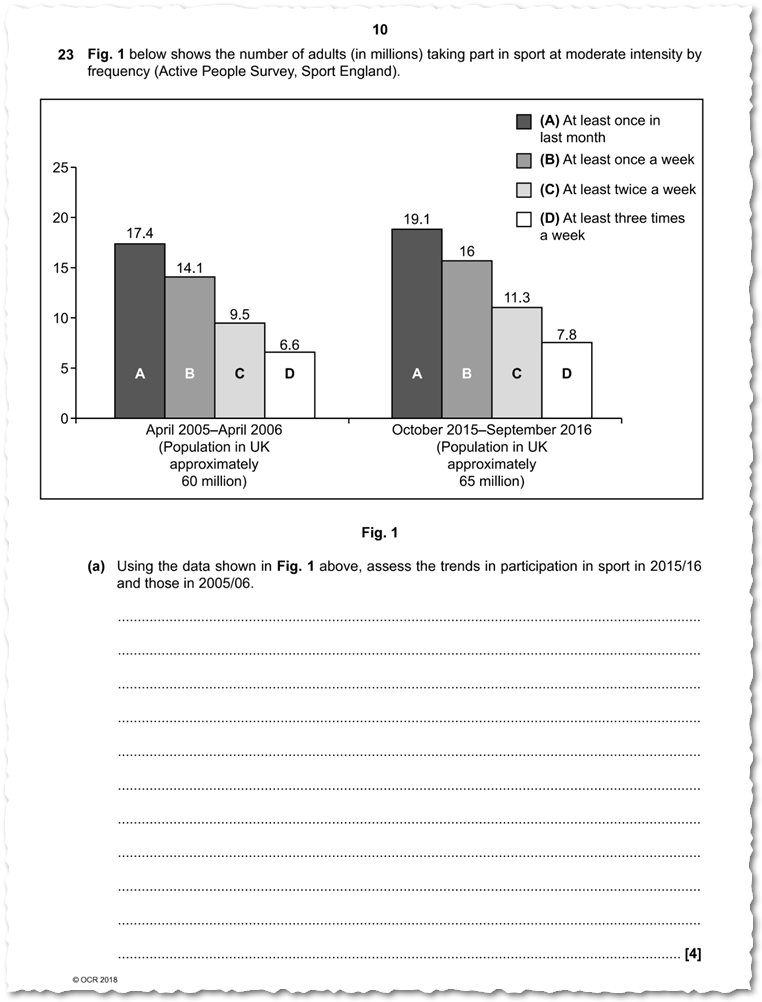
What can The EverLearner do to help?
I would like to ask a favour. Now the AEIs have been published, I would like you to tell me in what ways I can help you and your learners in the coming months. In addition to my core work with TheEverLearner.com and ExamSimulator, I aim to improve the experience of pre-exam learning this academic year. For this reason I am asking you to answer the form below.
You can complete the form anonymously if you wish but please do take a moment to let me know how I can help you.
Thank you.
%20Text%20(Violet).png)


